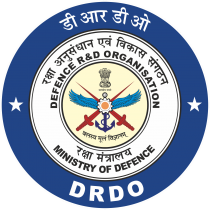Worldwide Cosmetic Packaging Industry to 2026 - North America is Expected to Hold a Significant Share - ResearchAndMarkets.com
The "Cosmetic Packaging Market - Growth, Trends, COVID-19 Impact, and Forecasts (2021 - 2026)" report has been added to ResearchAndMarkets.com's offering.
The cosmetic packaging market is expected to grow at a CAGR of 3.7% over the forecast period (2021-2026).
Companies Mentioned
- Albea SA
- HCP Packaging Co. Ltd
- RPC Group PLC (Berry Global Group)
- Silgan Holdings Inc.
- DS Smith PLC
- Graham Packaging LP
- Libo Cosmetics Company Ltd
- AptarGroup Inc.
- Amcor PLC
- Cosmopak Ltd
- Quadpack Industries SA
- Rieke Corporation
- Gerresheimer AG
- Raepak Ltd
- Ball Corporation
- Verescence France
- SKS Bottle & Packaging, Inc
- Altium Packaging (Loews Corporation)
Key Market Trends
Plastic is Expected to Hold Significant Share
- Plastic is a prominent material in cosmetic packaging due to its low cost, lightweight, flexibility, durability, and other factors. Plastics are a material of choice for manufacturing shatterproof and "no-spill" bottles, jars, tubes, caps, and closures for personal care products. According to the Packaging Machinery Manufacturers Institute (PMMI), at 61% market share, plastic packaging, such as bottles, jars, compacts, and tubes, dominate in cosmetics and other personal care products, where bottles are the most commonly used containers, accounting for 30% of the market. The most common and least expensive cosmetic bottles produced from HDPE are economical, impact-resistant, and maintain a good moisture barrier. Lotion bottles come in all different sizes and forms, where some lotions are kept in capped tubes.
- Moreover, the most common type of plastic used for cosmetic containers is PP plastics. However, these can also come in a more affordable PET plastic or a higher-end acrylic plastic. Acrylic plastic is usually clear and resembles glass. This type of material has an advantage over the glass as it is not prone to breakage. However, PP plastic is more affordable than acrylic and usually comes in round or tube-like shaped plastic containers. PP plastic containers can be molded into heart shapes, character shapes, or square shapes to suit the cosmetic product's style or marketing to be distributed. Jars and pots are majorly used for face creams, lotions, foundations, lip balms, powders, and other cosmetics, where the size ranges from 20mm to 60mm and can hold anywhere from 25ml (or less) to 250ml.
- For instance, SKS Bottle & Packaging Inc. provides various plastic jars offered in a range of sizes with a variety of closure options, from silver caps with sifters lined caps to the plastic dome. They provide PET jars for products, such as lip balm and eye cream, and white polypropylene thick wall jars with lined caps for lotions, balms, etc., with many more ranges. Tubular packaging has long been favored by design experts seeking to capitalize on tubes' convenience and portability to hold cosmetics and other personal care items. For instance, the introduction of Vaseline Jelly in a flip-cap jar and Dove's Advanced Hair Series Dry Oil Shampoo in a squeezable plastic tube in the United Arab Emirates facilitated convenient usage.
North America is Expected to Significant Share
- The United States is one of the biggest markets for cosmetics, personal care products, and fragrances market. According to a study commissioned by the Brazilian Association of the Personal Hygiene, Perfumery and Cosmetics Industry in 2018, the United States was the most valuable cosmetics industry globally, generating a revenue of USD 89.5 billion. The country's cosmetics market has been dominated by players like L'Oreal, Unilever, Procter & Gamble Co., and other leading players. Similarly, the cosmetic packaging landscape in the country is consolidated with a few significant players like Albea SA, AptarGroup Inc., Smurfit Kappa Group PLC, WestRock Co., and Graphic Packaging Holding Co. dominating market share.
- The country's primary product categories include skincare, makeup, haircare, perfumes, deodorants and toiletries, and oral cosmetics. According to data released by Happi Magazine in 2018, the country's derma skincare category emerged as the fastest-growing segment and experienced a growth of 84% in 2018 compared to 2017. The US cosmetics market is experiencing a growing demand for premiumization, in line with the global trend. This, in turn, is driving the need for innovative and premium packaging. In sync with the premiumization demands and intense focus on innovative and decorative packaging, Apatar Group Inc. acquired Fusion Packaging to expand its portfolio of differentiated design and decorative offerings for the cosmetics segment.
Key Topics Covered:
1 INTRODUCTION
2 RESEARCH METHODOLOGY
3 EXECUTIVE SUMMARY
4 MARKET DYNAMICS
4.1 Market Overview
4.2 Market Drivers
4.2.1 Increasing Consumption of Cosmetic Products
4.2.2 Increasing Focus on Innovation and Attractive Packaging
4.3 Market Restraints
4.3.1 Growing Sustainability Concerns
4.4 Industry Value Chain Analysis
4.5 Industry Attractiveness Porter's Five Forces Analysis
5 IMPACT OF COVID-19 ON THE INDUSTRY
6 MARKET SEGMENTATION
6.1 By Material Type
6.2 By Product Type
6.3 By Cosmetic Type
6.4 Geography
6.4.1 North America
6.4.2 Europe
6.4.3 Asia-Pacific
6.4.4 Latin America
6.4.5 Middle East & Africa
7 COMPETITIVE LANDSCAPE
7.1 Company Profiles
8 FUTURE OUTLOOK OF THE MARKET
For more information about this report visit https://www.researchandmarkets.com/r/ieg45g
View source version on businesswire.com: https://www.businesswire.com/news/home/20210323005822/en/




